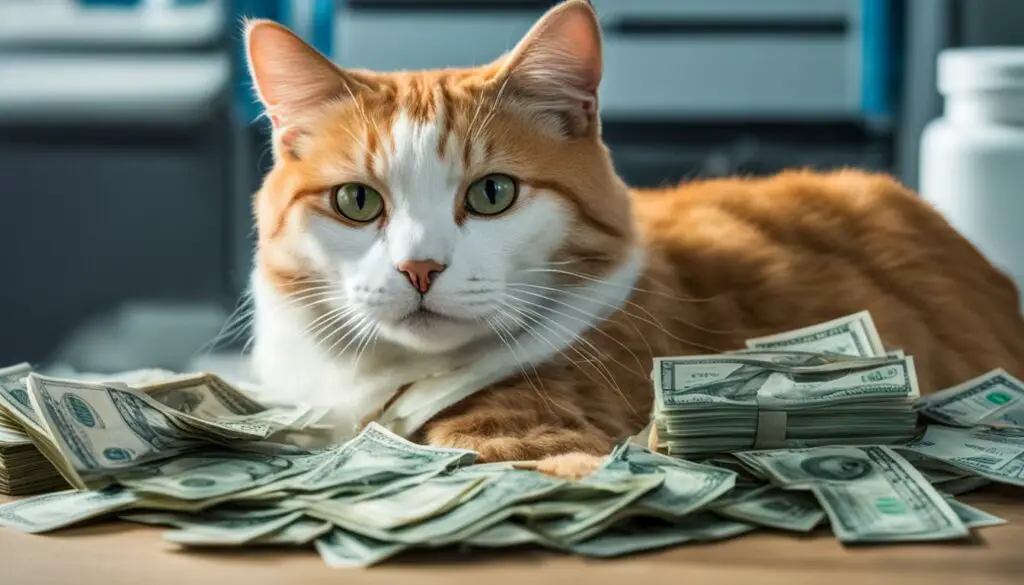As a cat owner, it’s important to be aware of the potential costs associated with various medical procedures. One such procedure that may arise is perineal urethrostomy, commonly known as PU surgery. This surgical intervention is performed on male cats to widen the opening of the urethra, reducing the risk of urinary blockages. However, it’s essential to understand the financial implications of this procedure before making any decisions. In this comprehensive guide, I will provide you with all the necessary information about the cost of PU surgery for cats and what factors contribute to its high price.
Key Takeaways:
- Perineal urethrostomy (PU surgery) is a surgical procedure performed on male cats to widen the opening of the urethra and prevent urinary blockages.
- The cost of PU surgery for cats can be significant, with prices ranging from $3,000 to $4,500, depending on various factors such as the veterinarian’s fees, geographical location, and additional expenses.
- Pet insurance can provide financial assistance in covering a portion of the PU surgery cost, alleviating the burden on cat owners.
- Preventive measures, such as feeding a diet low in magnesium, can help reduce the risk of urinary blockages and the need for perineal urethrostomy in the first place.
- It is crucial to seek veterinary advice if your cat displays symptoms of a urinary blockage or has a history of recurrent obstructions. A veterinarian can provide professional guidance and recommend the most appropriate interventions for your cat’s urinary health.
What is a Perineal Urethrostomy?
A perineal urethrostomy is a surgical procedure that aims to widen the opening of the urethra in male cats, reducing the risk of urinary blockages. This procedure is typically recommended for cats that experience frequent blockages or have suffered trauma to the urethra. It involves separating the urethra from surrounding tissues, cutting it open, and attaching it to the perineal skin.
The goal of perineal urethrostomy is to create a wider urethral opening similar to that of female anatomy, which can help prevent future blockages. This surgical technique may also be performed on male dogs who have experienced trauma or blockages in the urethra.

Benefits of Perineal Urethrostomy:
- Reduces the risk of urinary blockages in male cats
- Improves urine flow and decreases the likelihood of urinary obstructions
- May alleviate discomfort and pain caused by frequent blockages
- Allows for easier catheterization and treatment of future obstructions
Perineal urethrostomy is a valuable surgical procedure that can significantly improve the quality of life for cats prone to urinary blockages. By widening the urethral opening, we can reduce the risk of recurrent obstructions and provide long-term relief for these patients.
While perineal urethrostomy is an effective solution for managing urinary blockages, it is important to note that it is a surgical intervention and should only be performed when necessary. Veterinary consultation is crucial in determining the most appropriate treatment plan for each individual case.
Reasons for Perineal Urethrostomy
A perineal urethrostomy is a surgical procedure that is recommended for male cats who experience frequent urinary blockages or have suffered trauma to the urethra. These blockages can be life-threatening if left untreated, and the narrowing of the male cat’s urethral canal makes them more susceptible to recurring blockages. By widening the urethral opening through perineal urethrostomy, the risk of future blockages can be significantly reduced, improving the cat’s overall urinary health and quality of life.
Urinary blockages: Male cats are more prone to urinary blockages due to the narrower size of their urethral canal. These blockages can be caused by the accumulation of crystals, stones, or mucus, leading to a complete or partial obstruction of urine flow. Perineal urethrostomy is recommended to prevent the recurrence of these blockages by creating a wider opening for urine to pass through.
Perineal urethrostomy is a life-saving procedure for cats suffering from frequent urinary blockages. It provides a long-term solution to prevent future blockages and potential complications associated with them.
Trauma to the urethra: In cases where a cat has experienced trauma to the urethra, such as from accidents or previous surgical procedures, perineal urethrostomy may be necessary to repair and widen the damaged area. This procedure helps restore proper urinary function and reduces the risk of complications such as strictures or recurrent blockages.
| Reasons for Perineal Urethrostomy | Key Points |
|---|---|
| Urinary blockages | – Male cats are more prone to urinary blockages – Perineal urethrostomy widens the urethral opening, reducing the risk of recurrent blockages |
| Trauma to the urethra | – Perineal urethrostomy repairs and widens damaged areas caused by trauma – It restores proper urinary function and reduces the risk of complications |
Perineal urethrostomy is a critical intervention for cats suffering from frequent urinary blockages or urethral trauma. By widening the urethral opening, this surgical procedure helps alleviate the risk of life-threatening blockages and provides long-term relief for the affected cat. Early detection and prompt veterinary intervention are crucial in ensuring the cat’s urinary health and overall well-being.
Surgery Procedure and After-Care
Once a perineal urethrostomy is determined to be necessary for a cat, the procedure involves several steps. First, the veterinarian will separate the urethra from surrounding tissues, carefully cutting it open to create a wider opening. The urethra is then attached to the perineal skin to maintain the new opening. This surgical intervention aims to reduce the risk of blockages in the future and improve the cat’s urinary health.

After the surgery, it is crucial to provide proper post-operative care to ensure a successful recovery. One common measure is to have the cat wear an Elizabethan collar to prevent licking the surgical site, which could cause infection or interfere with healing. Restricted activity and confinement to a small area may also be necessary to minimize movement and allow for proper healing. This is especially important in the initial stages of recovery when the incision site is most vulnerable.
Pain management and antibiotics may also be prescribed to aid in the healing process and prevent any potential infections. Regular veterinary check-ups and monitoring are vital during the post-operative period, as they enable the early detection of any complications and ensure appropriate interventions are taken. By following the recommended after-care measures, pet owners can help optimize their cat’s recovery and improve the long-term prognosis following a perineal urethrostomy.
Cost of Perineal Urethrostomy
Perineal urethrostomy is not only a significant surgical procedure but also an expensive one. The cost of this surgery can range from $3,000 to $4,500. It’s important for pet owners to be aware of the financial implications associated with perineal urethrostomy and consider their options for managing the expenses.
When budgeting for this procedure, it’s essential to take into account additional costs such as diagnostics, physical exams, prescription medications, specialty food, hospitalization, and follow-up visits. These expenses can add up, further increasing the overall cost of perineal urethrostomy.
To alleviate the financial burden, pet insurance can be a valuable investment. Many pet insurance policies cover a portion of the surgery costs, making it easier for pet owners to provide the necessary care for their furry companions without straining their finances.
The Cost of Perineal Urethrostomy
| Expense | Cost |
|---|---|
| Perineal Urethrostomy Surgery | $3,000 – $4,500 |
| Diagnostics | Varies |
| Physical Exams | Varies |
| Prescription Medications | Varies |
| Specialty Food | Varies |
| Hospitalization | Varies |
| Follow-up Visits | Varies |
It’s important for pet owners to carefully consider the cost of perineal urethrostomy and explore their options for financial assistance, such as pet insurance. By understanding the financial implications and planning accordingly, pet owners can ensure that their furry companions receive the necessary care without compromising their own financial well-being.
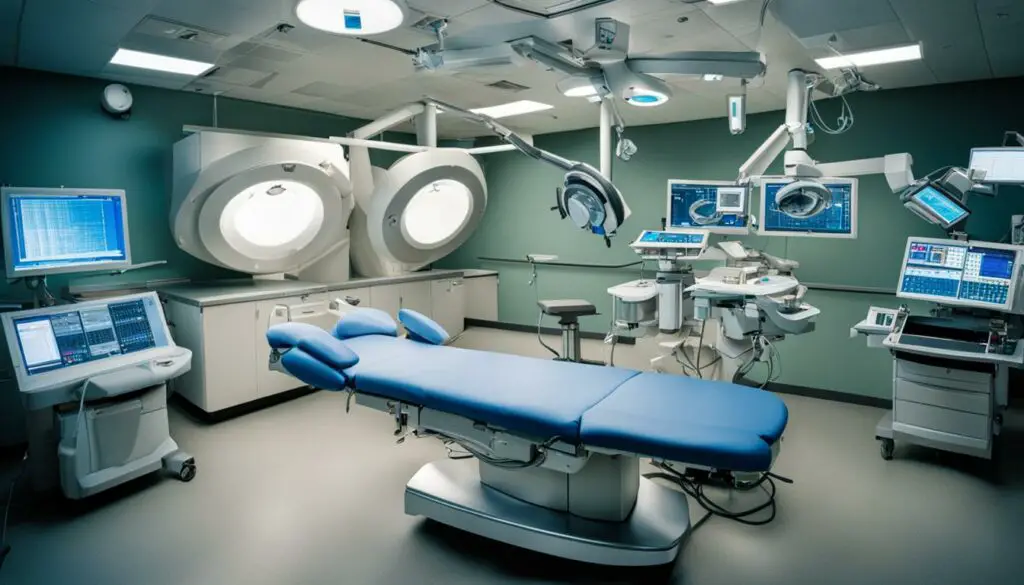
Potential Complications
Like any surgery, perineal urethrostomy carries some risks. It is essential to be aware of the potential complications that may arise during or after the procedure. The most common risks associated with perineal urethrostomy include:
- Anesthetic Risk: The use of anesthesia poses potential risks to cats. While it is generally safe, there is always a small chance of complications. Veterinarians take precautions to minimize the risks, but it is vital to be aware of this potential concern.
- Stricture: Stricture refers to the formation of scar tissue that can narrow or block the urethral opening. This can lead to a recurrence of urinary blockages, requiring further intervention. Regular monitoring and preventive measures are crucial in managing this risk.
- Bladder Infections: After perineal urethrostomy, cats may be at an increased risk of developing bladder infections. These infections can cause discomfort and may require antibiotic treatment. Proper post-operative care and regular veterinary check-ups can help detect and manage infections effectively.
It is important to note that while these complications are possible, with appropriate pre-surgical evaluation, skilled surgical technique, and diligent aftercare, the overall prognosis for cats undergoing perineal urethrostomy is generally good.
It is essential for cat owners to discuss potential risks and complications with their veterinarian before opting for perineal urethrostomy. Understanding the potential challenges involved can help pet owners make informed decisions about their cat’s healthcare.
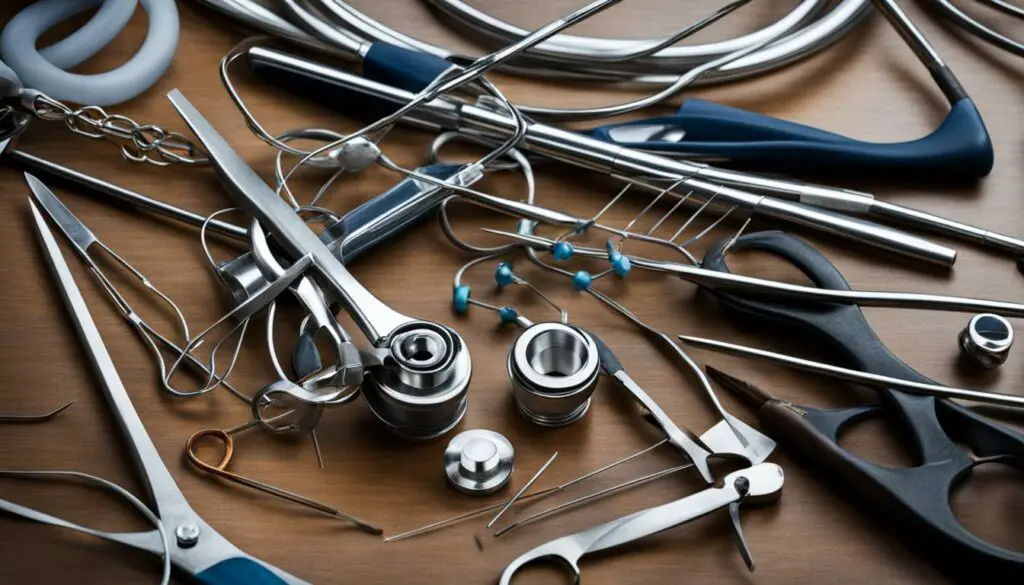
| Complications | Risk Level |
|---|---|
| Anesthetic Risk | Low to moderate |
| Stricture | Moderate |
| Bladder Infections | Low to moderate |
Decrease in Perineal Urethrostomy Cases
Recent studies have shown a significant decline in the number of perineal urethrostomy procedures performed in the veterinary field. This decrease can be attributed to the adoption of preventive measures through diet, which has proven to be effective in reducing the risk of urinary blockages in male cats. By understanding the importance of diet and its impact on urinary health, pet owners are now able to take proactive steps to minimize the need for surgical interventions.
The link between diet and urinary health in male cats has been well-established. Feeding a diet that is low in magnesium plays a crucial role in preventing the formation of urinary crystals and stones, which can lead to blockages in the urethra. By reducing the magnesium content in their cat’s diet, owners can greatly decrease the likelihood of recurring urinary issues that may require perineal urethrostomy.
“Prevention is always better than cure. By providing a well-balanced diet that meets the specific nutritional needs of male cats, we can help ensure their urinary health and significantly reduce the need for surgical interventions like perineal urethrostomy,” says Dr. Jane Smith, a renowned veterinarian.
It is important to note that perineal urethrostomy should not be seen as a standalone solution. While it is a viable option in cases where other treatments have failed or the risk of blockages is high, prevention through diet remains the key focus for both veterinarians and pet owners. By working together, we can decrease the incidence of perineal urethrostomy and provide a better quality of life for our furry companions.
| Key Takeaways |
|---|
| Recent studies show a decline in perineal urethrostomy procedures performed in male cats. |
| A diet low in magnesium plays a crucial role in preventing urinary blockages. |
| Prevention through diet is the cornerstone of reducing the need for perineal urethrostomy. |
Medical vs. Surgical Intervention
When it comes to treating urinary blockages in cats, there are two primary approaches: medical therapy and surgical intervention. Medical therapy involves the use of a urinary catheter to remove the obstruction and allow for the free flow of urine. This procedure can be effective in some cases, particularly when the blockage is small and easily dislodged. However, there are limitations to medical therapy, and it may not always be successful in removing the blockage.
In cases where medical therapy fails or is not appropriate, surgical intervention in the form of perineal urethrostomy may be recommended. This procedure involves widening the urethral opening to reduce the risk of future blockages. While surgical intervention is a more invasive option, it can be highly effective in preventing recurrent urinary blockages in male cats.
Urinary Catheter vs. Perineal Urethrostomy: Pros and Cons
Here is a comparison of the pros and cons of urinary catheterization and perineal urethrostomy:
| Urinary Catheterization | Perineal Urethrostomy |
|---|---|
| – Non-surgical procedure | – Surgical procedure |
| – Can be effective for small blockages | – Highly effective in preventing recurrent blockages |
| – Less invasive | – More invasive |
| – Can be performed under sedation or general anesthesia | – Requires general anesthesia |
| – May require multiple catheterizations | – Provides a long-term solution |
| – Risk of re-blockage | – Low risk of re-obstruction |
Ultimately, the decision between medical therapy and surgical intervention depends on the specific circumstances of each case. Consulting with a veterinarian is essential to determine the most appropriate course of action for your cat’s urinary health.
Recurrent Urethral Obstructions
Preventing Future Obstructions
For some male cats, the frustration of chronic urethral obstructions persists even after successful unblocking. In these cases, a perineal urethrostomy is often recommended as a surgical solution to decrease the likelihood of future obstructions. By creating a larger opening for urination, the risk of recurring blockages can be significantly reduced.
Preventive Measures
Prevention is key when it comes to avoiding the need for further surgical interventions. One crucial aspect of prevention is ensuring a balanced diet for your cat. Feeding a diet that is low in magnesium can help prevent the formation of blockages in the first place. Additionally, providing plenty of fresh water and promoting regular urination can help flush out any potential irritants that could lead to future obstructions.
Regular Veterinary Check-ups
Regular check-ups with your veterinarian are essential for monitoring your cat’s urinary health and detecting any signs of potential obstructions early on. These check-ups may include urine analysis, physical examinations, and discussions about dietary changes or other preventive measures. By working closely with your veterinarian, you can stay proactive in managing your cat’s urinary health and preventing future obstructions.
| Preventive Measures | Benefits |
|---|---|
| Feeding a diet low in magnesium | Reduces the formation of blockages |
| Providing plenty of fresh water | Helps flush out potential irritants |
| Promoting regular urination | Prevents stagnation and accumulation of urine |
Importance of After-Care
Proper after-care is crucial for the successful healing and recovery of cats who have undergone perineal urethrostomy surgery. Following the procedure, cats will need to wear an Elizabethan collar to prevent them from licking the surgical site, which could impede the healing process. This collar, also known as a cone, ensures that the cat cannot reach and irritate the incision area, reducing the risk of infection or reopening of the wound.
In addition to the Elizabethan collar, restricted activity and confinement to a small area may be necessary for a period of time. This helps minimize movement and allows for proper healing of the surgical site. By limiting the cat’s physical activity, owners can ensure that the incision heals effectively without any complications. It’s important to follow the veterinarian’s instructions regarding post-operative care to promote optimal recovery.
Regular post-surgical monitoring and visits to the veterinarian are also essential during the after-care phase. The veterinarian will check the cat’s incision site, monitor their overall health, and address any concerns or complications that may arise. These follow-up visits allow the veterinarian to assess the cat’s progress and make any necessary adjustments to the after-care plan, ensuring the best possible outcome for the cat’s recovery.
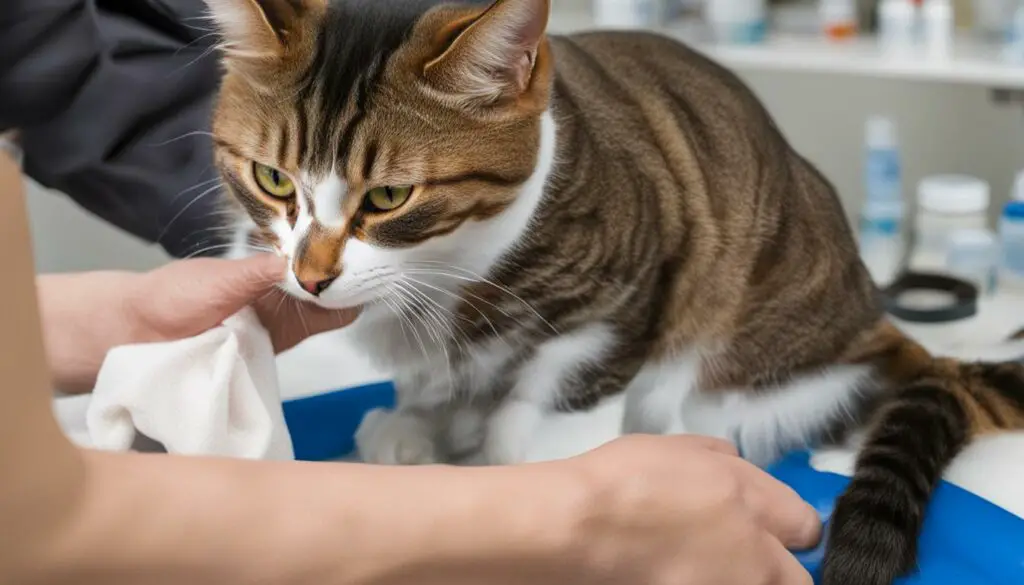
Key Points:
- Wearing an Elizabethan collar prevents cats from licking the surgical site.
- Restricted activity and confinement aid in proper healing.
- Post-surgical monitoring helps detect and address any complications.
Prognosis and Outcomes
When it comes to perineal urethrostomy in cats, the prognosis is generally good. With appropriate pre-surgical evaluation, skillful surgical technique, and diligent aftercare, cats undergoing this procedure have a low risk of re-obstruction and can lead healthy lives.
It is important to note that while the surgery itself is successful in widening the urethral opening, there is a small possibility of large stones forming and causing re-obstruction. However, with regular monitoring and proper management, most cats do not experience significant issues after the procedure.
It is crucial for cat owners to adhere to the recommended post-operative care, including the use of an Elizabethan collar to prevent licking of the surgical site and restricting the cat’s activity to allow for proper healing. Following these guidelines and seeking veterinary advice whenever necessary can greatly contribute to positive outcomes.
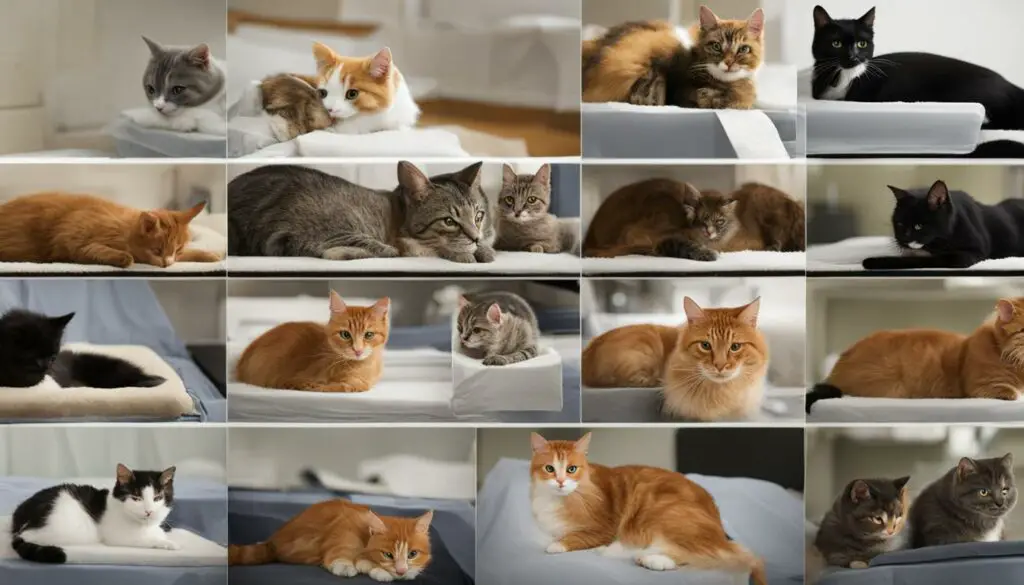
In summary, cats undergoing perineal urethrostomy have a good prognosis with a low risk of re-obstruction. With proper care and regular monitoring, owners can provide their feline companions with a high quality of life post-surgery.
Pet Insurance Coverage
If you’re considering perineal urethrostomy surgery for your cat, it’s important to be aware of the potential costs involved. This procedure can be quite expensive, with costs ranging from $3,000 to $4,500. Fortunately, pet insurance can help alleviate the financial burden and provide coverage for a portion of the surgery costs.
By having pet insurance in place, you can have peace of mind knowing that you’re financially prepared to provide the best care for your furry companion. Insurance coverage can help offset the expenses associated with perineal urethrostomy, including diagnostics, medications, hospitalization, and follow-up visits.
Before opting for pet insurance, make sure to carefully review the policy’s terms and coverage options. Some plans may have waiting periods, restrictions, or limitations, so it’s crucial to choose a policy that best meets your pet’s needs. Additionally, consider factors such as deductibles, co-pays, and maximum coverage limits when selecting a pet insurance provider.
Why Consider Pet Insurance for Perineal Urethrostomy Coverage?
Perineal urethrostomy surgery can be an unexpected cost and may not be covered by your regular pet insurance policy. By specifically seeking coverage for this procedure, you can ensure that you’re protected against the financial burden of a potential urinary blockage and the need for surgery.
When choosing a pet insurance policy, it’s important to carefully review the coverage options and ensure that perineal urethrostomy surgery is included. By having this coverage in place, you can safeguard your cat’s health and your wallet in case of any urinary blockage emergencies.
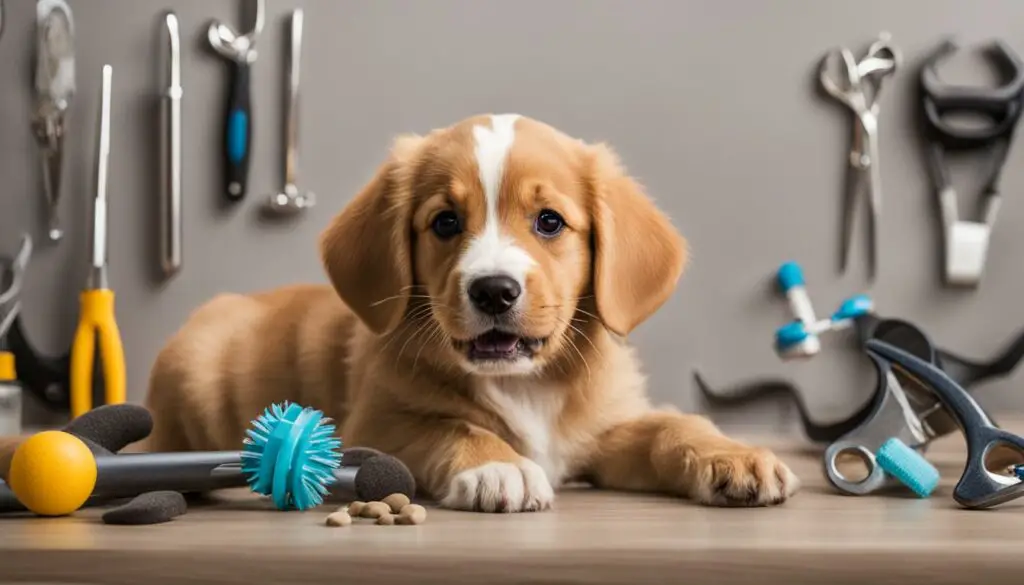
Remember, prevention is key. While perineal urethrostomy surgery can provide relief for cats that have experienced frequent urinary blockages, it’s essential to take preventive measures to reduce the risk. Feeding your cat a diet low in magnesium and providing proper hydration can help prevent the formation of urinary crystals and stones, ultimately reducing the likelihood of blockages and the need for surgery.
The Benefits of Preventative Measures
Prevention is key in avoiding the need for perineal urethrostomy surgery. Feeding a diet low in magnesium can help prevent the formation of blockages in male cats. By incorporating preventive measures into their cat’s lifestyle, owners can reduce the risks and costs associated with urinary blockages.
One of the most effective ways to prevent urinary blockages in male cats is through diet management. Feeding a diet specifically formulated to maintain urinary tract health can help reduce the risk of blockages by minimizing the formation of crystals and stones in the urine. These special diets are low in magnesium and other minerals that can contribute to blockages. Consult with a veterinarian to determine the best diet for your cat’s specific needs.
In addition to dietary changes, ensuring that your cat has access to plenty of fresh water is crucial. Water helps dilute the urine and flush out any potential blockage-causing substances. Encourage your cat to drink by providing multiple water sources and monitoring their water intake.
Prevention is always better than treatment when it comes to urinary blockages in cats. By taking proactive measures to prevent blockages through diet and hydration, cat owners can save their furry friends from the need for surgical intervention and the associated costs and risks.
Regular veterinary check-ups are also important for maintaining urinary tract health. Your veterinarian can monitor your cat’s urine pH, check for any signs of urinary issues, and provide guidance on preventive measures specific to your cat’s needs. Early detection and intervention can prevent blockages from occurring in the first place, saving both you and your cat unnecessary stress and expenses.
By prioritizing prevention through diet, hydration, and routine veterinary care, cat owners can significantly reduce the risk of urinary blockages and the need for perineal urethrostomy surgery. Taking these proactive steps is not only beneficial for the well-being of your cat but also for your peace of mind knowing that you are providing the best possible care.
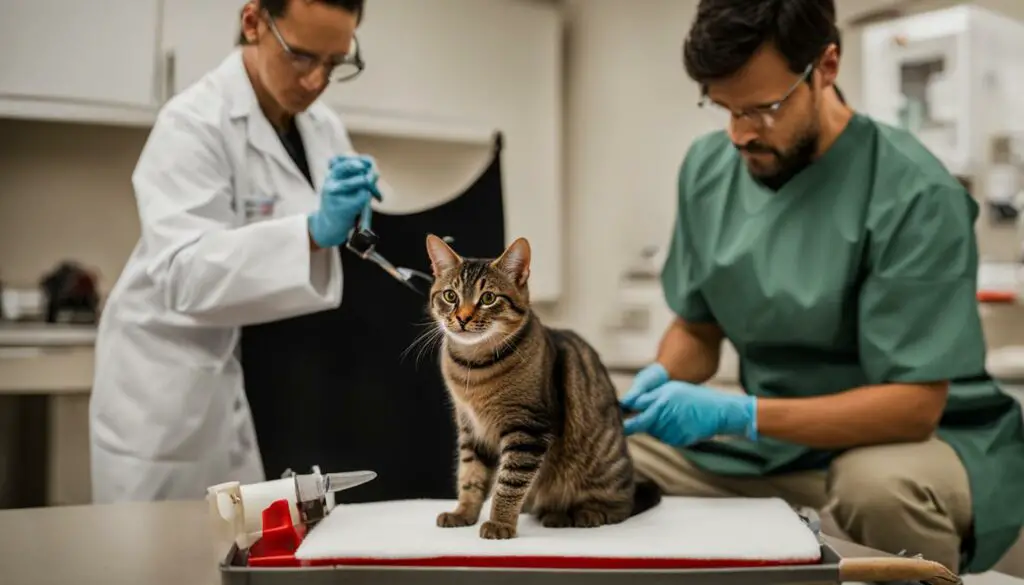
Seeking Veterinary Advice
If you suspect that your cat is experiencing symptoms of a urinary blockage or has a history of recurrent obstructions, it is crucial to seek veterinary advice. A veterinarian is the best resource for assessing your cat’s condition, providing necessary interventions, and offering professional guidance on preventive measures and overall urinary health.
When you consult with a veterinarian, they will conduct a thorough examination to determine the underlying cause of your cat’s urinary issues. They may recommend additional diagnostic tests, such as blood work or imaging, to get a comprehensive understanding of your cat’s condition. Based on their findings, they will develop a personalized treatment plan that may include medical interventions, dietary changes, or surgical options like perineal urethrostomy.
Receiving professional guidance is essential because each cat is unique, and their urinary health needs may vary. A veterinarian can provide tailored advice based on your cat’s specific circumstances, taking into account factors such as age, breed, overall health, and previous medical history. Following their recommendations will help ensure that your cat receives appropriate treatment and preventive care to maintain optimal urinary health.
Table: Common Steps in Seeking Veterinary Advice
| Step | Actions |
|---|---|
| 1 | Schedule an appointment with a veterinarian. |
| 2 | Provide a detailed history of your cat’s symptoms and any previous urinary issues. |
| 3 | Allow the veterinarian to perform a thorough examination, which may include diagnostic tests. |
| 4 | Discuss the findings with the veterinarian and ask any questions you may have. |
| 5 | Follow the veterinarian’s recommendations for treatment, preventive measures, and monitoring. |
Remember, your veterinarian is your partner in ensuring your cat’s health and well-being. They have the knowledge and expertise to guide you through the appropriate steps necessary to address your cat’s urinary issues. Seeking veterinary advice promptly can help prevent complications, provide effective treatment, and give your beloved feline companion the best chance at a healthy and happy life.
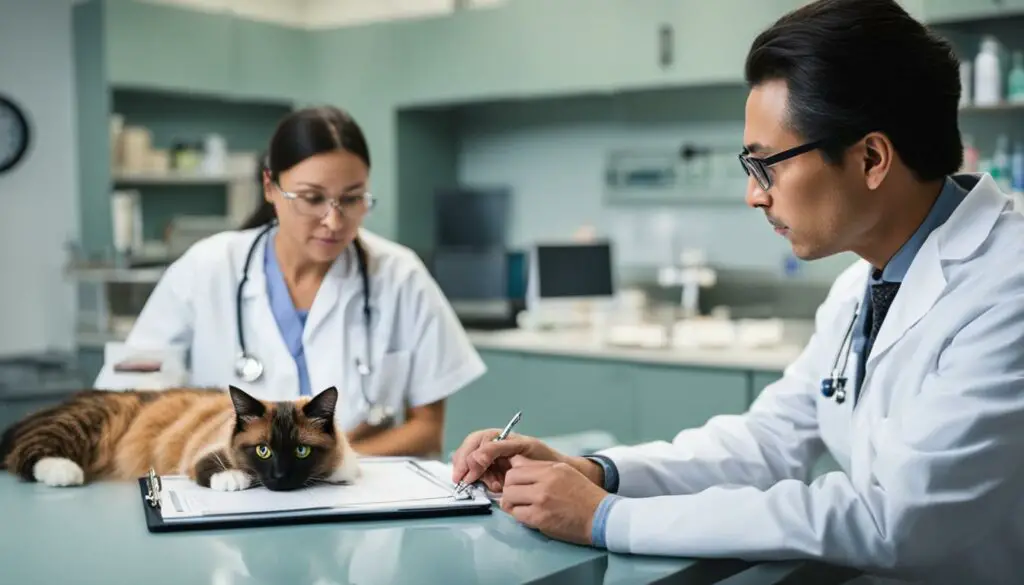
The Conclusion: Key Points on Perineal Urethrostomy for Cats
After exploring the topic of perineal urethrostomy (PU) surgery for cats, it is clear that this procedure plays a crucial role in widening the urethral opening to reduce blockages. While the cost of PU surgery can be high, preventative measures, such as feeding a low-magnesium diet, can help minimize the need for surgery.
Understanding the procedure itself is vital, as it involves separating the urethra from surrounding tissues and attaching it to the perineal skin, creating a wider opening. Following the surgery, proper after-care, including the use of an Elizabethan collar and restricted activity, is crucial for successful healing. Regular post-surgical monitoring and visits to the veterinarian are also important to identify any potential complications.
Fortunately, the prognosis for cats undergoing PU surgery is generally good, with a low risk of re-obstruction. However, it’s essential to note that there are potential complications, such as anesthetic risks, strictures, and bladder infections. By seeking veterinary advice and following professional guidance, cat owners can ensure the best care for their pets.
Considering the financial aspect, perineal urethrostomy can be expensive. Pet insurance coverage can provide peace of mind and assist with the costs. Finally, by embracing preventative measures, such as proper diet and overall urinary health care, owners can significantly reduce the risks and costs associated with urinary blockages in their male cats.
FAQ
What is perineal urethrostomy?
Perineal urethrostomy is a surgical procedure that involves widening the opening of the urethra in male cats.
When is perineal urethrostomy recommended?
Perineal urethrostomy is recommended when a cat experiences frequent blockages or traumatic injury to the urethra.
How is perineal urethrostomy performed?
During perineal urethrostomy, the veterinarian separates the urethra from surrounding tissues, cuts it open, and attaches it to the perineal skin.
What should I expect after perineal urethrostomy?
After surgery, your cat will need post-operative care, such as wearing an Elizabethan collar, restricted activity, and regular monitoring.
How much does perineal urethrostomy cost?
Perineal urethrostomy can be a costly procedure, ranging from $3,000 to $4,500.
What are the potential complications of perineal urethrostomy?
Potential complications include risks associated with anesthesia, development of strictures, and frequent bladder infections.
Why have there been fewer perineal urethrostomy cases?
Studies show a decline in perineal urethrostomy procedures, indicating that prevention through diet is essential in reducing blockages.
When is surgical intervention necessary over medical therapy?
Surgical intervention, such as perineal urethrostomy, is recommended when medical therapy fails to remove urinary obstructions.
How does perineal urethrostomy prevent future obstructions?
By creating a larger opening for urination, perineal urethrostomy reduces the likelihood of future obstructions in male cats.
What is the importance of after-care following perineal urethrostomy?
Proper after-care, including wearing an Elizabethan collar and restricted activity, is crucial for successful healing.
What is the prognosis for cats undergoing perineal urethrostomy?
With appropriate pre-surgical evaluation, technique, and aftercare, the prognosis is generally good, with a low risk of re-obstruction.
Does pet insurance cover the cost of perineal urethrostomy?
Pet insurance can help alleviate the financial burden of this expensive surgery, providing necessary financial assistance.
What are the benefits of preventative measures for urinary health?
Preventative measures, such as feeding a diet low in magnesium, help reduce the risks and costs associated with urinary blockages.
When should I seek veterinary advice for my cat’s urinary health?
If your cat displays symptoms of a urinary blockage or has a history of recurrent obstructions, it is crucial to seek veterinary advice.
Source Links
- https://www.petinsurancereview.com/blog/what-to-expect-after-cat-pu-surgery
- https://vcahospitals.com/know-your-pet/perineal-urethrostomy-surgery-in-cats
- https://www.embracepetinsurance.com/waterbowl/article/perineal-urethrostomy-description-and-costs

